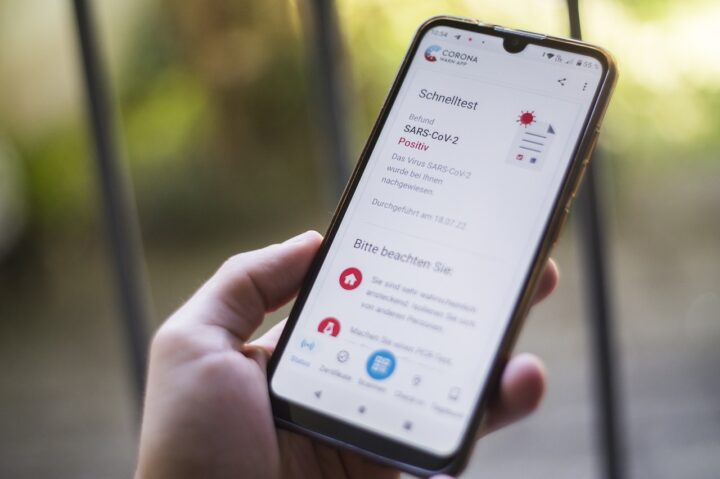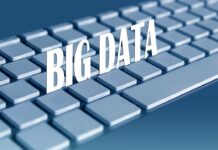In the competitive landscape of mobile applications, acquiring users is not just a goal; it’s a necessity. As the app market continues to swell, the fight for users has never been fiercer. Whether you’re launching a new app or seeking to revitalize an existing one, a robust user acquisition strategy is your golden ticket to success. This guide will take you on an exhilarating journey through the ins and outs of app user acquisition, providing you with the insights and tactics needed to attract, engage, and retain users like a pro.

Table of Contents
- Understanding User Acquisition
- Defining Your Target Audience
- Crafting an Irresistible Value Proposition
- Leveraging Multiple Acquisition Channels
- Organic Channels
- Paid Channels
- Email Marketing
- Push Notifications
- Social Media Marketing
- Optimizing Your App Store Listing
- Creating Compelling Marketing Campaigns
- Analyzing Performance Metrics
- Key Metrics to Monitor
- Tools for Analytics
- Building a Community for Retention
- Conclusion: Your User Acquisition Adventure
1. Understanding User Acquisition
User acquisition is the process of attracting new users to your app. It encompasses everything from awareness-building to conversion tactics. The key to successful user acquisition lies in understanding your target audience and creating a tailored strategy that resonates with them.
It’s not just about the numbers; it’s about quality over quantity—bringing in users who will engage with your app and become long-term advocates.
2. Defining Your Target Audience
Before you dive headfirst into user acquisition, take a step back and define your target audience. This is where user personas come into play.
- Create User Personas: Identify the demographics, interests, and behaviors of your ideal users. Understanding who they are will help you tailor your messaging and marketing strategies effectively.
- Utilize Analytics Tools: Leverage tools like Google Analytics or Mixpanel to gather data about existing users, which can provide valuable insights into potential audiences.
3. Crafting an Irresistible Value Proposition
Your value proposition is the heart of your marketing efforts. It should clearly articulate why users should download your app instead of a competitor’s.
- Focus on Benefits: Highlight the unique features and benefits that make your app stand out. What problems does it solve? How does it enhance users’ lives?
- Keep It Concise: Your value proposition should be clear and easily understood. Aim for a statement that can be communicated in a sentence or two.
4. Leveraging Multiple Acquisition Channels
Diversity is key when it comes to user acquisition channels. Relying on a single method can limit your reach. Here’s how to effectively leverage various channels to maximize your user acquisition strategy. If you need help optimizing these channels, consider engaging an app user acquisition agency that specializes in these tactics.
Organic Channels
- Search Engine Optimization (SEO): Optimize your website and app store listing with relevant keywords to attract organic traffic. Write blog posts that provide value to your audience and link to your app.
- Social Media: Build a presence on platforms where your target audience hangs out. Share engaging content, connect with users, and promote your app through organic posts and stories.
Paid Channels
- Pay-Per-Click (PPC) Advertising: Use platforms like Google Ads or social media ads to reach a broader audience. Target your ads based on user interests, demographics, and behaviors for maximum impact.
- Influencer Marketing: Partner with influencers who align with your brand to tap into their follower base. This can create a buzz around your app and drive downloads.
Email Marketing
- Personalized Campaigns: Build an email list of potential and existing users. Send personalized emails that highlight app features, special promotions, or updates. Tailored content increases engagement and encourages downloads.
- Nurturing Leads: Use email drip campaigns to educate users about your app’s benefits over time. Share tips, success stories, or how-to guides to keep your app top-of-mind.
Push Notifications
- Re-engagement Strategies: Utilize push notifications to remind users of your app’s value. Send alerts about new features, updates, or special offers to re-engage inactive users.
- Personalization: Tailor your push notifications based on user behavior and preferences. Personalized messages lead to higher engagement rates and user retention.
Social Media Marketing
- Content Creation: Share visually appealing content, including videos, infographics, and user testimonials. Highlight the unique aspects of your app and engage your audience through interactive posts.
- Community Engagement: Foster a community around your app by responding to comments, conducting polls, and hosting live Q&A sessions. Engagement on social media can drive word-of-mouth referrals.
5. Optimizing Your App Store Listing
Your app store listing is your first impression on potential users. Make it count!
- Title and Keywords: Use a catchy title that includes relevant keywords to enhance searchability. Research popular keywords that potential users are likely to search for.
- Visuals: Invest in high-quality screenshots and a compelling app icon. Visuals can significantly impact a user’s decision to download your app.
- User Reviews and Ratings: Encourage users to leave reviews and ratings. A higher rating can boost your app’s visibility in the app store and improve user trust.
6. Creating Compelling Marketing Campaigns
Once you’ve established your value proposition and optimized your app listing, it’s time to roll out marketing campaigns that resonate.
- Content Marketing: Develop informative blog posts, videos, and social media content that showcase your app’s features and benefits. Share success stories from users to build credibility.
- Email Marketing: Utilize email campaigns to keep users informed about updates, features, and promotions. Personalized emails can increase engagement and drive downloads.
7. Analyzing Performance Metrics

Tracking your user acquisition efforts is crucial for understanding what’s working and what needs improvement.
Key Metrics to Monitor
- Cost Per Acquisition (CPA): Measure how much it costs to acquire a new user. Understanding this helps optimize your budget and strategy.
- Return on Investment (ROI): Evaluate the profitability of your marketing campaigns. This metric helps you understand the effectiveness of your investment.
- User Retention Rate: Assess how many users continue to engage with your app over time. High retention rates indicate user satisfaction and loyalty.
- Conversion Rate: Track the percentage of users who complete desired actions, such as downloading your app or making an in-app purchase. High conversion rates indicate effective marketing strategies.
Tools for Analytics
- Google Analytics: Use Google Analytics for mobile apps to track user behavior, demographics, and engagement metrics. This tool offers insights into user interactions within your app.
- Firebase: Firebase provides real-time analytics for app performance and user engagement. Its comprehensive dashboard helps track user actions, retention, and conversion rates.
- Mixpanel: Mixpanel focuses on event tracking and user segmentation, allowing you to analyze how different user groups interact with your app. This can inform targeted marketing strategies.
8. Building a Community for Retention
Acquiring users is just the beginning. Building a loyal community is essential for long-term success.
- In-App Engagement: Use push notifications and in-app messaging to keep users engaged and informed about new features, promotions, or updates.
- Social Media Groups: Create a community on platforms like Facebook or Discord where users can share experiences, ask questions, and provide feedback. This fosters a sense of belonging and keeps users connected to your app.
9. Conclusion: Your User Acquisition Adventure
Mastering app user acquisition is an ongoing adventure that requires creativity, strategy, and continuous learning. By defining your target audience, crafting an irresistible value proposition, leveraging diverse acquisition channels, and analyzing your performance metrics, you can successfully attract and retain users.
Remember, the world of mobile apps is ever-evolving, so stay adaptable and be ready to pivot your strategies as needed. With the right approach, your app can thrive in the competitive landscape, attracting users and turning them into loyal advocates. Now, go forth and conquer your app user acquisition journey!



















“Excellent strategies! User acquisition is key to growing any app, and this post offers some great tips on targeting the right audience and optimizing marketing efforts. I especially like the focus on personalized user experiences—definitely going to implement some of these ideas!”